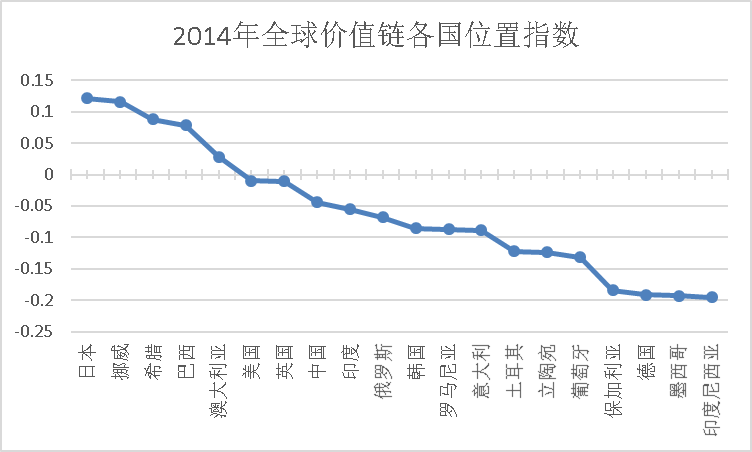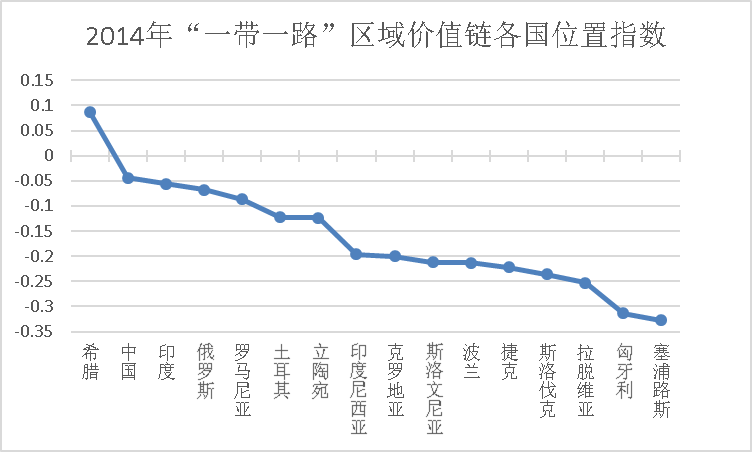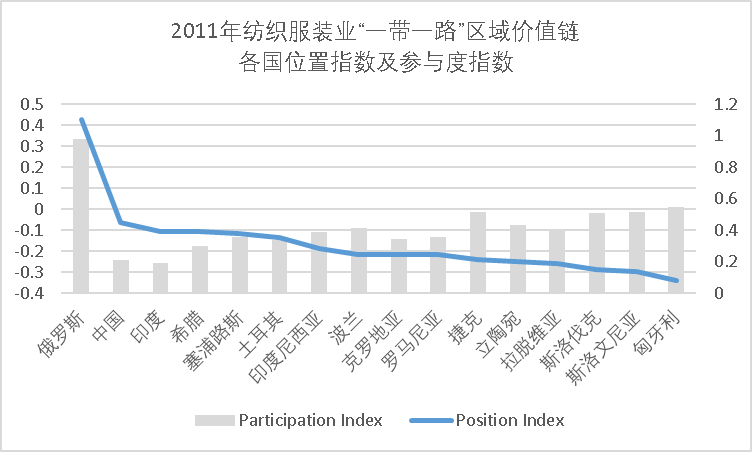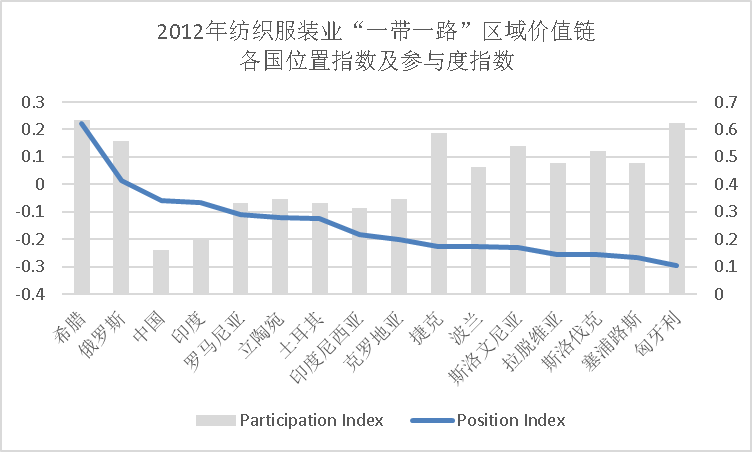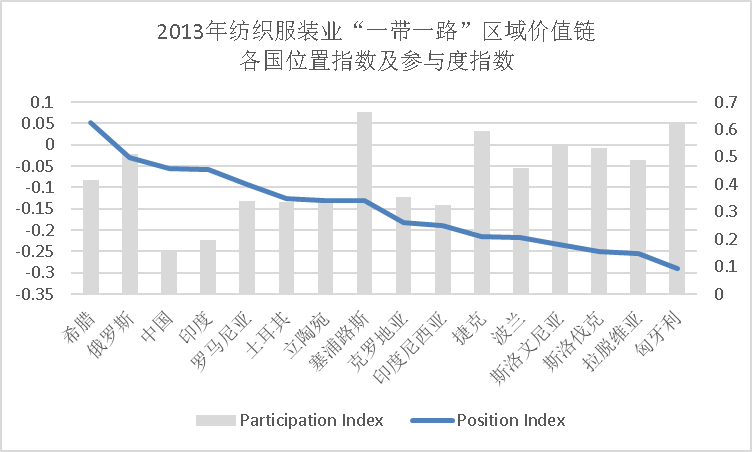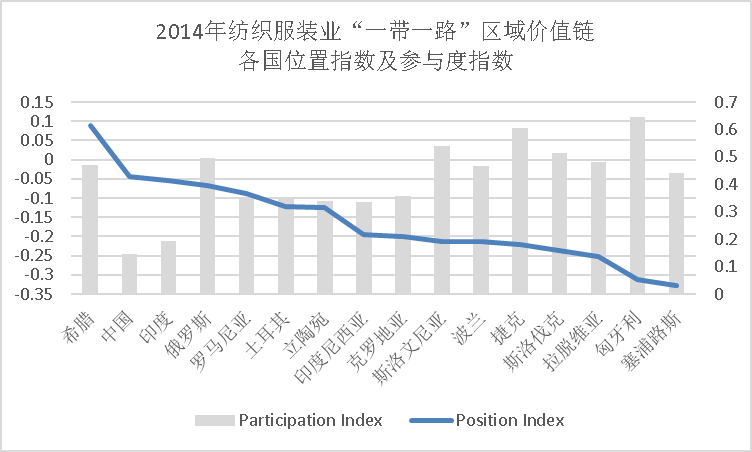基于“一带一路”区域价值链的中国纺织服装业产业转移可行性分析毕业论文
2020-08-20 08:08
摘 要
由于劳动力成本优势的丧失,中国纺织服装业在全球价值链中的劳动密集型生产环节已不具备竞争优势,但是由于行业自身创新能力和品牌能力的限制,其很难快速跨越至全球价值链中的高端环节。随着“一带一路”沿线经济合作的加深,“一带一路”区域价值链的构建引发广泛关注。中国纺织服装业若有能力在“一带一路”区域价值链中占据高端生产环节,将会推动其产业转移,促进产业结构升级。
本文基于KPWW的贸易额增加值分解方法,对传统的RCA指数进行修正。通过计算“一带一路”沿线国家纺织服装业贸易增加值的RCA指数,判断该区域内纺织服装业发展的互补性大小,进而探讨构建“一带一路”纺织服装业区域价值链的可行性。通过计算沿线国家的价值链位置指数,绘制价值链物理位置图,来判断我国纺织服装业在“一带一路”区域价值链中的具体位置,并甄选我国纺织服装业产业转移的目标国。
实证结果显示,“一带一路”沿线纺织服装业发展的互补性强,区域价值链具备可行性;我国纺织服装业在“一带一路”区域价值链中处于附加值高的上游生产环节,产业转移最合适的目标国是印度尼西亚,或与其经济发展水平和区位优势相近的东南亚其他国家。
关键词:“一带一路”;区域价值链;纺织服装业;产业转移;贸易增加值分解
Abstract
Because of the loss of labor cost advantages, China's textile and garment industry lost its competitive advantage in the labor-intensive production link of global value chain. However, due to the limitations of the industry's innovation capabilities and brand capabilities, it is difficult to quickly transform into the high-end links in the global value chain. The construction of ‘The Belt and Road’ regional value chain has caused widespread concern, with the deepening of economic cooperation along the route. If China’s textile and garment industry can occupy a high-end production link in the "The Belt and Road" regional value chain, it will promote the transfer of industry, and improve the upgrading of industrial structure.
This paper modifies the traditional RCA index based on KPWW's trade value added decomposition method. By calculating the RCA index of trade value added in textile and garment industry of countries along "The Belt and Road", determine the complementary size of the textile and garment industry in the region, and then discuss the feasibility of constructing "The Belt and Road" regional value chain of textile and clothing industry. By calculating the value chain position index of the countries along the route, the physical location map of the value chain is drawn.According to the map, we can judge the specific position of China's textile and clothing industry in the regional value chain, and select the target country of Industry transfer.
The empirical results show that the development of textile and garment industry along the"The Belt and Road" has a strong complementarity, the regional value chain is feasible; China's textile and garment industry occupy a high value-added link in the upstream production processes of the regional value chain; The most suitable target country for industrial transfer is Indonesia, or other Southeast Asian countries with similar economic development and regional advantages.
Key words: "The Belt and Road";regional value chain;textile and garment industry;industry transfer;Trade added value decomposition
目录
第一章 绪论 1
1.1研究的背景和意义 1
1.1.1研究背景 1
1.1.2研究意义 2
1.2文献综述 2
1.2.1国内外价值链及“一带一路”研究综述 2
1.2.2国内外纺织服装业产业转移研究综述 3
1.3研究思路及方法 4
1.3.1研究思路 4
1.3.2研究方法 4
1.4可能存在的创新点和不足 5
1.4.1可能存在的创新点 5
1.4.2不足 5
第二章 基于价值链理论的“一带一路”区域价值链形成可行性分析 5
2.1“一带一路”战略提出背景及发展现状分析 5
2.1.1“一带一路”战略提出背景 5
2.1.2“一带一路”经济区发展现状分析 6
2.2价值链理论阐述 7
2.2.1价值链理论的提出及演进 7
2.2.2全球价值链驱动机制分析 7
2.3“一带一路”区域价值链的概念解析及构建必要性分析 8
2.3.1“一带一路”区域价值链的概念解析 8
2.3.2“一带一路”区域价值链构建的必要性分析 8
2.4“一带一路”区域价值链形成可行性分析 9
第三章 基于产业转移理论的中国纺织服装业产业转移必要性分析 10
3.1我国纺织服装业发展现状分析 10
3.1.1出口形势低糜,库存积压严重 10
3.1.2传统优势受到挑战,产业结构亟待升级 10
3.2产业转移理论阐述 11
3.2.1产业转移概念阐述 11
3.2.2产业转移理论综述 11
3.2.3产业转移动因分析 11
3.3中国纺织服装业产业转移必要性分析 12
第四章 纺织服装业“一带一路”区域价值链形成可行性实证分析 12
4.1研究方法 12
4.2指标选择 15
4.3数据来源 15
4.4实证结果分析 16
第五章 基于价值链转换的我国纺织服装业产业转移可行性分析及目标国选择 18
5.1基于价值链转换的我国纺织服装业产业转移可行性分析 18
5.1.1研究方法 18
5.1.2实证结果分析 18
5.2我国纺织服装业产业转移目标国选择 19
第六章 结论与建议 20
6.1结论 20
6.2政策建议 21
6.2.1深化“一带一路”沿线各领域经济合作,构建区域价值链 21
6.2.2积极引导纺织服装业产业转移,推动产业结构升级 21
6.2.3增强我国企业自主创新能力,培养其品牌意识 21
参考文献 22
致谢 24
第一章 绪论
1.1研究的背景和意义
1.1.1研究背景
(1)“一带一路”经济区发展势头如火如荼
“一带一路”经济区开放以来,我国不断加大对沿线国家的投资,在基础设施建设、卫星通信、双边贸易、资金融通、产能合作等多领域开展深入合作。2016年,中国同“一带一路”沿线国家的双边贸易额达到6.3万亿人民币,增长了0.6%,对“一带一路”沿线国家投资达到145亿美金,占全国对外投资总额的8.5%。2017年5月14日,在北京举行的“一带一路”国际合作高峰论坛上,习近平总书记发表重要讲话指出,要以“一带一路”六大经济走廊为依托,深化开展各领域的互惠合作。
(2)全球价值链分工低端锁定,构建区域价值链推动产业升级
相关图片展示:
